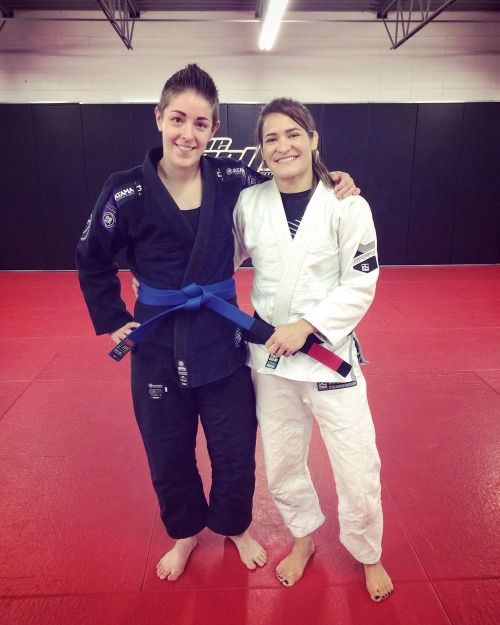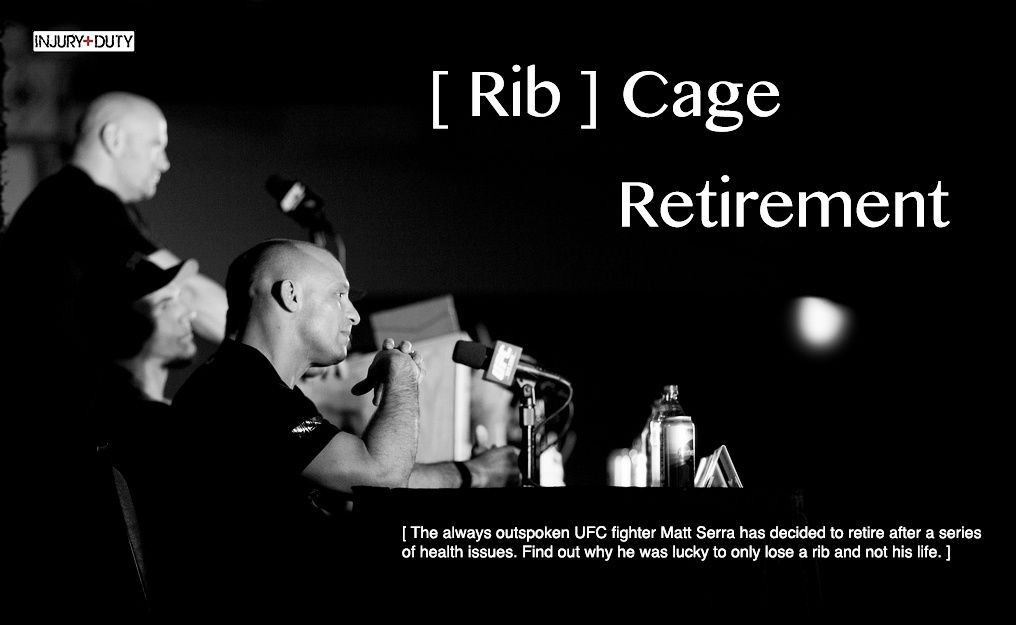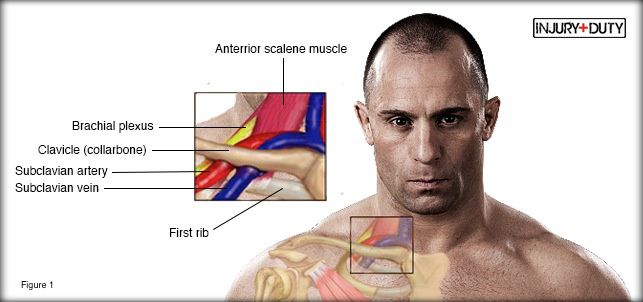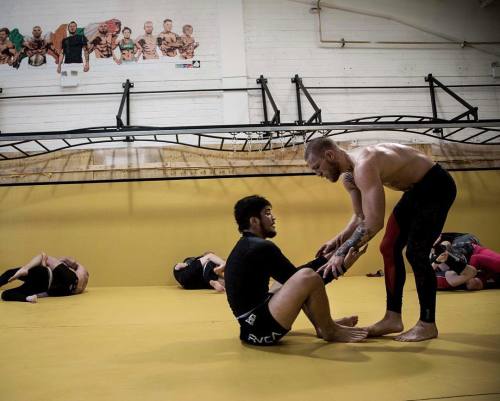#brazilian jiu jitsu
Hello, friends! Today I break my long and unfortunate silence to report that I received my blue belt last Saturday. It was a surprise and an honor to be promoted by two inspirational coaches whom I deeply respect and love. Receiving this blue belt represents everything I’ve been through in the 15 months since I started my BJJ journey: Depression, anxiety, panic, pain, injury, surgery, fear, doubt, ego, and failure… I am grateful for the instruction of my coaches Mayko Araujo and Karen Antunes, and humbled by their belief in me.
Post link
Last week, former Ultimate Fighting Championship (UFC) Welterweight Champion Matt “The Terror” Serra, decided to hang up his gloves and retire from the sport of Mixed-Martial-Arts (MMA).
In an interview with Newsday, Serra recalls the beginning of what ultimately sealed his fate to walk away from the sport he loved.
The beginning of what would prove to be a crazy ride started when Serra felt a pain in his left arm after a Brazilian Jiu-Jitsu session at one of his academies on April third. The scrappy 39 year-old chalked it up as nothing more than a pulled muscle, and didn’t give it much more thought.
Two days later, while working as a corner man for one of his fighters, the pain was back and worse than before. By 2 a.m. he couldn’t even lift his hand to touch his neck, that’s when he finally decided to drive himself to the emergency room at Winthrop University Hospital in Mineola, New York.
After a few tests, two blood clots were found in his arm and another in his lungs. Doctors put Serra on blood thinners to address the clot in his lungs. For now he’ll be injecting himself in the abdomen with a high dose of Lovenox (a drug that prevent blood from clumping up as is flows through your body), every day for at least the next three months. A thankful Serra recalls:
“Then I got freaked out. You don’t catch that [and] after the lung, that stops your heart or your brain. Then you’re done. I’m very fortunate to, basically, be here. Sounds kind of morbid. If I didn’t catch that – I was about to go to bed. I’m like, man, something’s not feeling right.“
Last week, while giving an interview to the MMA Hour’s Ariel Helwani (May 27th, 2013), Serra was asked what exactly the name of the medical condition was that landed him in the emergency department, and in classic Serra fashion he responded with:
“I have a weird disorder, or whatever you wanna fuckin’ call it. It’s some kind of… what is it called? The boom-boom syndrome. Ah, I forgot the fuckin’ name of it. My wife knows.”
So, instead of bugging Serra’s wife with your questions, we here at Injury-Duty figured it’d be a perfect opportunity for us to help clear things up.
What finally got Serra to make a visit to the emergency department was the pain in his arm, which was the result of blood clot, as we now know. But, what caused the blood clots in the first place you ask? Well, to better understand that, lets take a quick Injury-Duty anatomy crash-course.
On both the left and right sides of your upper chest, you have a relatively snug space between your collarbones (in medical jargon, your clavicles) and your first ribs (click for an image), which sits right behind the collarbone. In that space run three important structures:
- Brachial plexus: This is essentially a thick bundle of nerves responsible for taking all signals from your brain to your arm (and vice versa).
- Subclavian artery: This artery’s job to supply your arm with “fresh” (or oxygenated) blood.
- Subclavian vein: This vein’s job to remove “used” (or deoxygenated) blood from your arm, and return it to your lungs where it can pick up more oxygen.
After a thorough evaluation by his medical team, Serra was diagnosed with what is known as thoracic outlet syndrome (TOS), which is just a fancy way of saying that the “snug space” we described above (known as the thoracic outlet) is being smooshed. What is doing the smooshing? It can be do to a lot of things, but here is a list of the most common causes:
- A broken first rib or collarbone
- Neck muscles that are too large (from such things as bodybuilding. We’re pretty sure this is what Serra would say happened.)
- Extending the arm above the head for a long period of time (during sleep or while unconscious)
- A congenital anomaly (nerd speak for having something in your body that developed abnormally)
- Tumor (pretty rare)
As for what exactly is being smooshed, well here are the most common suspects:
- Brachial plexus (i.e. Neurologic type of TOS)
- Subclavian vein (i.e .Venous type)
- Subclavian artery (i.e. Arterial type)
The symptoms a patient might have due to TOS are divided into categories, all depending on what exactly is being smooshed:
- Neurologic (meaning involving the nerves): Most common, making up about 95% of all cases.
- Venous (meaning involving the veins): Responsible for 4% of all cases.
- Arterial (meaning involving the arteries): Rare. Occurring only in about 1% of all cases, but is potentially the most serious of the three types.
Serra’s case was actually pretty “text-book”. The quickness with which the pain, swelling and bluish discoloration of his arm hit are classic hallmarks of the venous type of TOS (again, the smooshed subclavian vein variety). These patients are typically males, in their late 20s to early 30s who have participated in some form of strenuous physical activity with the affected arm (insert masturbation joke here… come on. You know you were thinking it in your head).
The trouble with smooshing the subclavian vein (or any vein, actually) is that doing so causes a sort of back-up of blood. And, since veins are under pretty low amounts of pressure, it doesn’t take much to clamp down on one. For example, this is why it’s advised when on a long trip (a plane flight for example) that you stand up and stretch every two hours or so. The simple action of your knees being bent (along with the pressure of the seat your in pushing down on the veins in the back of your knees) can cause blood flow to slow down. What’s the problem with that you ask? Well, when allowed to sit around in one place for too long, blood likes to clump up and form a clot. Trouble is, when the clots are able free themselves up, or whatever it was that was sloshing the vein to begin with is moved, these clots are free to plug up another spot in your body, and too often that spot is in the lung, this is known as a pulmonary embolus (PE). Sometimes the PE is small and easily managed, but it is not uncommon for larger one to kill a patient, quickly.
Once the blood clots in Serra’s arm and lung were confirmed (probably using venography) he was likely given tissue plasminogen activator (tPA), often referred to as the "clot buster”, to help breakdown the clots that had already formed. And, to prevent new clots from forming, he was started on Lovenox (a drug that prevents blood from clumping up as is flows through your body).
Now that the medical team had figured out what exactly was going on, the next step was to figure out how to prevent it from happening again. For that, the treatment for TOS is surgery, with the goal being to remove whatever it is that’s responsible for smooshing the vein in question. And, because the structures that are being smooshed in patients with TOS can vary, surgeons have preferences as to where they feel the best place to enter the body is to correct the problem. In Serra’s case (venous TOS), many doctors believe that the transaxillary approach (in simple terms, that means through the armpit. Yes, sounds odd, but take a look at the picture to get a better idea). This approach allows for the surgeon to best see the important structures that may be playing a role in the problems being caused. The surgery was done almost exactly one month after Serra had initially presented in the emergency department with arm pain.
Had Serra opted to not have surgery, chances are pretty much 100% that he’d have another clot form (even if he continued to use medications that prevent his blood from clotting).
- Is TOS enough to force somebody into retirement: Generally speaking, no. Serra will likely be allowed to return to physical activity in 6-8 weeks. But, he is 39 years old and has a successful BJJ gym he runs, which both are likely factors that went into his decision to leave the sport.
- Will he have to worry about contact sports now?: No, he will not have to alter his training or recreational activities after his surgery.
On behalf of one Long-Island based team to the another, we here at Injury-Duty would like to wish Matt Serra a speedy recovery all the best in his future endeavors!
Stephan Kesting interviews Kurt Osiander, a BJJ black belt under Ralph Gracie. They discuss old school Ralph Gracie training tactics, the attributes that make a champion, gi vs no gi training for MMA, whether anyone can become a black belt, and much more.
(viahttps://www.youtube.com/watch?v=3F11mqkvWHE)
Stephan Kesting interviews Kurt Osiander, a BJJ black belt under Ralph Gracie. They discuss old school Ralph Gracie training tactics, the attributes that make a champion, gi vs no gi training for MMA, whether anyone can become a black belt, and much more.
(viahttps://www.youtube.com/watch?v=3F11mqkvWHE)
Original picture from Viking Wong instagram:
https://www.instagram.com/vikingwongbjj/
Original post:
https://www.instagram.com/p/BIP69meBL_d/
Post link
Original picture from Viking Wong instagram:
https://www.instagram.com/vikingwongbjj/
Original post:
https://www.instagram.com/p/BIP69meBL_d/
Post link
Dillon Danis training with Conor McGregor in Dublin ahead of the Irishman’s rematch with Nate Diaz.
Taken from Dillon’s Instagram here: https://www.instagram.com/dillondanis/
Post link
Dillon Danis training with Conor McGregor in Dublin ahead of the Irishman’s rematch with Nate Diaz.
Taken from Dillon’s Instagram here: https://www.instagram.com/dillondanis/
Post link
Clay Guida on Father’s Day at GB San Antonio.
Taken from Clay’s instagram here: https://www.instagram.com/clayguida/
Post link
Clay Guida on Father’s Day at GB San Antonio.
Taken from Clay’s instagram here: https://www.instagram.com/clayguida/
Post link
Garry “The Lion Killer” Tonon X Rousimar Palhares. Photo by @fairertimes:
https://www.instagram.com/fairertimes/
Post link
Garry “The Lion Killer” Tonon X Rousimar Palhares. Photo by @fairertimes:
https://www.instagram.com/fairertimes/
Post link
A few days ago I was invited by the local ADCC federation to their championship to make a highlight video for them. Here it is! Check it out! Pictures coming soon.
ADCC Moldova Open Championship 2016 Highlights
©2013 ADCC Moldova http://www.adcc.md/
A few days ago I was invited by the local ADCC federation to their championship to make a highlight video for them. Here it is! Check it out! Pictures coming soon.
ADCC Moldova Open Championship 2016 Highlights
©2013 ADCC Moldova http://www.adcc.md/
Just uploaded this new version of shaka to our Redbubble shop. T-shirts, phone cases, stickers, posters and other great stuff is available here:
http://www.redbubble.com/people/bjjsom/shop
Easy to order + worldwide shipping.
Post link
Just uploaded this new version of shaka to our Redbubble shop. T-shirts, phone cases, stickers, posters and other great stuff is available here:
http://www.redbubble.com/people/bjjsom/shop
Easy to order + worldwide shipping.
Post link
Just added this new design to our online store. Check it out here:
http://www.redbubble.com/people/bjjsom
Post link
Just added this new design to our online store. Check it out here:
http://www.redbubble.com/people/bjjsom
Post link
“I’ve been training Jiujutsu for more than half my life, and I have never rolled in a gi. When I started, all of my training was geared toward Vale Tudo, NHB, Cage fighting… The term MMA wasn’t even used at the time. So we didn’t train in the gi. I know there’s a bunch of opinions out there for and against training in a gi for MMA. But for a number of reasons, I decided to get outside of my comfort zone, start as a white belt and get friendly with the gi. I got manhandled my first day, and probably will continue to get my ass kicked, but that’s ok, that’s how you grow. We cannot be afraid to fail. When setting goals, reach farther than you can actually grasp. And if you fall, grit your teeth, re focus your intention and try again. I’ll keep you guys posted on my progress”, - Carlos Condit
Photo credit: Will Fox
Post link
















